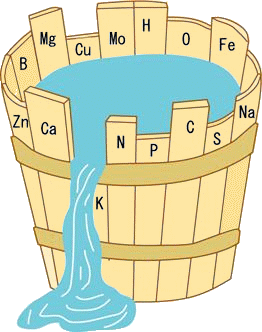|
Director's Address at the Beginning of 2003 |
Setting a New Trend
It has been nearly two years since the Research Center for Chemical Risk Management (CRM) was established in 2001. CRM completed the first phase of its activities to fulfill its mission by the end of 2002 and is starting the second phase in 2003. We are confident that our research activities have contributed to setting a new trend in chemical risk management in Japan and that the trend continues to grow.
Major Accomplishments in the First Phase
We achieved two major accomplishments in the first phase of CRM. The first one is the outcome of our consolidated efforts in vertical and horizontal research activities. Our efforts and the results were highly evaluated in the review by the External Evaluation Committee meeting held at the end of 2002. The Chairman of the committee, Dr. Saburo Ikeda of Tsukuba University, commented that CRM has been making progress and producing results in its vertical and horizontal research activities that were considered to be a difficult challenge in the beginning.
The second accomplishment is the output contributed to the public. In August 2002, AIST-ADMER (Atmospheric Dispersion Model for Exposure and Risk Assessment) was released on the Internet for free download and public use. In December 2002, our first chemical risk assessment document, gDetailed Risk Assessment of 1,3-Butadienh was released. Mr. Masayosi Nakamura of Nikkei, a member of the External Evaluation Committee, praised our efforts in setting a target and producing output.
Essential Tools for Risk Assessment and Policy Evaluation
AIST-ADMER is a computer software program that enables estimation of atmospheric concentrations of chemical substances by distributing chemical emissions in 5-km meshes throughout the Kanto area. With AIST-ADMER, anyone can estimate average atmospheric concentrations in 5-km meshes if the unit emission rate data (some of which is already installed in AIST-ADMER) or the information on chemical emissions at a source point is available.
Using AIST-ADMER together with METI-LIS, a computer software program already released by the Ministry of Economy, Trade and Industry, it is possible to estimate atmospheric chemical concentrations in a certain region. Further validation of PRTR data is possible through comparison of the estimates and monitoring data.
In many situations regarding environmental issues, conflicting opinions among the regulatory body, the public, inhabitants in a particular area, private companies and so on, are attributable to the differences in interpretation of data. Without common tools to evaluate and understand the relation among chemical emissions, environmental concentrations and possible risks, each stakeholder in the issue develops its own interpretation of the data. AIST-ADMER has the potential to become one of the common tools for risk assessment and policy evaluation. It is our target to continue to provide these valuable common tools to the public.
Science of Policy Evaluation
Risk assessment is essential for policy evaluation. CRM is initiating efforts in policy evaluation.
Barrel of Liebig
Within a period of less than two years, CRM produced output through concerted efforts in horizontal research activities. The main feature of our activities, which differ from the traditional research activities in Japan, is the requirement to achieve a certain level of quality in areas outside of each researcherfs own expertise. Remember Liebigfs Law of the Minimum on the effects of fertilizers.

Various mineral nutrients are involved to produce the desired effects of fertilizers. When there is already enough N (nitrogen) available, adding more would not improve the effects. The effects of a fertilizer are determined by the level of K (potassium), its smallest element. Liebigfs Law of the Minimum also applies to our activities in risk assessment. CRMfs strength is in exposure assessment, but our weakness is in hazard assessment. The quality or reliability of our risk assessment documents depends on how we can improve our ability and build our expertise in hazard assessment.
In order to provide meaningful output of our research activities to the public, it is necessary to improve the weakness of CRM. It is a difficult challenge to improve areas outside of our expertise, but CRM has been making progress. It is possible to ask some other research institute to provide us with their hazard assessment, but this is not our option. The barrel of Liebig has a hoop, which corresponds to the horizontal research of CRM. It is necessary to modify the part obtained from outside CRM to accommodate it within our hoop and make the barrel. This is the very unique feature of our horizontal research activities. CRM continues making efforts to improve its weakness as well as to further strengthen its original expertise.
We have set a new trend in chemical risk management in Japan through our activities in less than two years. Our belief and expectation in the application of risk assessment in policy evaluation is starting to be communicated to the public. We are very proud that CRM has initiated this trend.